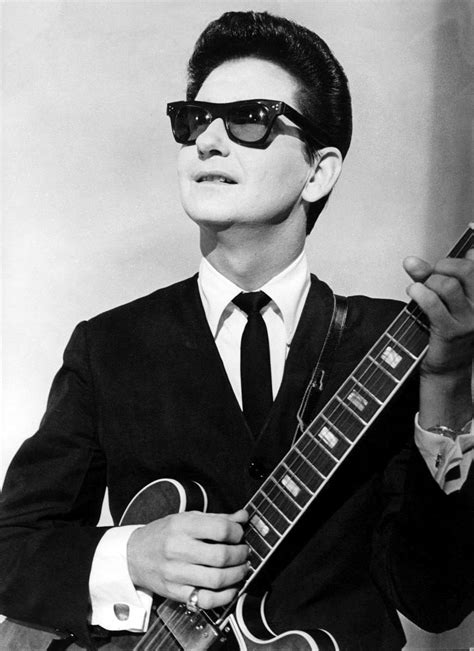
August 15, 2021
Welcome to every reporter’s conundrum: Who to believe when confronted with different versions of events.
And so it is with the saga of Richard Lee McNair, the convicted killer/prison escapee. Should one trust the police? McNair? Or, neither?
The obvious choice would seem to be law enforcement — the authority figures we have always trusted. [Well, many of us anyway.]
The McNair file contains about a dozen conflicting accounts. Police say one thing, McNair another. Not terribly unusual when dealing with police and bad guys.
The hard truth — are you sitting down? — is that those in authority weren’t always accurate … or honest.
CASES IN POINT …
Here we go:
1] Let’s begin with a biggie. A senior police officer could not believe that a reporter was getting mail from ADX prisoner Richard Lee McNair. The officer took it upon himself to contact a TV news director about a series she was running on McNair and his letters to a Canadian journalist.
I then got a phone call from the news director who demanded to know what the hell was going on. Even though I’d given her copies of the prisoner’s letters and envelopes, she still believed the officer. Such is the hallowed respect some have for those who wear a badge. 
[click on image to enlarge]
The TV news director contacted ADX Florence — only to discover that McNair was indeed corresponding with a reporter in Canada. The officer apologized — but not before I suggested he quit and donate his pension to charity.
That was one snow job that went terribly wrong.
2] Richard McNair claims he was able to breathe in his shrink-wrapped, air-tight escape pod — thanks to a long cardboard tube he poked through the bottom of the pallet. Not so, says one officer involved with the file. He told a TV production crew that McNair used a tiny plastic tube — just a few inches long — attached to the top part of a plastic pop bottle. Dramatic stuff.
The cop was actually describing a homemade snorkel which McNair left behind when he left the pod. The officer later conceded McNair had been breathing through a cardboard tube.
3] According to police, McNair got help from fellow cons at the Pollock pen who helped him seal his escape pod with shrink wrap. McNair denies this, reminding doubters to check the high-resolution images taken by prison security cameras. The story was later changed to cons gave McNair advice.
4] Louisiana police initially claimed Richard McNair eluded their massive dragnet by hopping a freight train, which brought him safely north to Monroe, LA. That never happened. However, a TV production company in Australia believed the story 100 percent — it’s all there in its one-hour doc for Discovery. Nice try, but no freight trains pulled out of Alexandria for Monroe that day.
The train story was pure media manipulation. Police wanted people to think their manhunt would’ve succeeded had it not been for that freight. This had nothing to do with capturing an escapee … and everything to do with people in authority covering their butts.
5] “Oh yeah?” remarked a senior officer when confronted with McNair’s claim that, to beat the police dragnet, he walked up train tracks at night through the heart of Kisatchie National Forest. “So where’s the van he stole?,” the officer demanded. Fair question.
McNair’s detailed account of his break-ins and theft of an old van were both verified, thanks to a sheriff who willingly shared crime scene intel with the Canadian reporter. The officer read McNair’s letters and — bingo! — two ‘cold case’ files were closed. Just like that.
It’s hard to believe the U.S. Marshals — with all their resources and contacts — could not determine this on their own. It’s stunning — not that they didn’t know — but stunning they’d actually try to spin such a story. Shame on them.
Turns out, McNair drove the van east to Monroe where he stole a second vehicle, a Dodge Charger. The con abandoned the muscle car in a Texas university town on the border with Mexico. There’s a case of both parties trying to out snow-job each other.
6] Police claim McNair fibbed about how he crossed Rainy River in a rubber raft to get from International Falls, Minnesota to Fort Frances, Ontario. McNair was spot on with his description of the crossing, Fort Frances, a specific apartment building in town … and the small bus terminal. There was little doubt that one of America’s Most Wanted had been there.
7] Just a minor point, but still worth a mention … McNair says he removed ONE cinder block from his holding cell at the County Jail in Minot in 1988, shortly after he was arrested for murder. A senior officer claims that two blocks were removed. However, police photos show only one block had been chiseled out, backing up the prisoner’s account. But as I say, not a big deal.
8] While on the run during his 1992 furlough, police claim he sent a Christmas card to the Warden at the Bismarck Pen — presumably to intimidate him. There’s no evidence of this in a comprehensive Federal Bureau of Investigation report on the escape. The FBI listed the cards McNair mailed to both prisoners and guards — but there’s no mention of any sent to the warden. How could the FBI have missed such an important detail? McNair called the warden’s claim a ‘fairy tale’ … but who believed the guy?
9] Police also claim McNair scribbled, “Won’t do that again” in his copy of the heavily redacted FBI report. I’ve seen those same papers — and there’s no such hand-written quote — or anything similar — by the prisoner.
“Won’t do that again” was a complete police fabrication — which now appears in various media reports, as if it was legit. Hell, it was even in early editions of the book [The Man Who Mailed Himself Out of Jail] until I got my hands on the FBI report.
10] Police initially claimed McNair shot and killed trucker Jerry Thies at point-blank range, leaving powder burns on the victim’s clothing. Maybe that happened; I don’t know. However, neither an autopsy report nor an official police report on the shooting mentions powder burns. This doesn’t take away from the fact that the senseless murder was a mob-like hit.
11] Consider the hundreds of tips passed on to the TV program, America’s Most Wanted. How many were valid — and how many were bogus? One way or another, all tips that were broadcast helped the fugitive.
At a time when McNair was hiding out in Eastern Canada, police informed reporters the fugitive could be in Western Canada — several thousand miles away. According to a tipster, he was supposedly seen on Calgary’s transit system. The alleged sighting of the infamous US fugitive became a national story, which McNair soon found on one of his Internet searches. For him, the bogus sighting was a thumbs-up moment.
Police news releases are always almost valid — and they’re easy to write up. But when it comes to intel that’s highly speculative, that’s a whole different story. Both police and their stenos are rolling the dice.
Here’s a delicate question: Once Richard McNair was captured, how many journalists filed stories to share that their previous reports were based on false sightings? Scribes rarely own up to being used by the police because it brings into question their credibility.
Most reporters know their place; those who don’t are the very last to snag PR jobs.
12] Once McNair was handcuffed by the RCMP, he fessed up immediately that he was Richard Lee McNair — one of America’s Most Wanted, an escaped convict from a prison in Louisiana serving a life sentence for murder. A Mountie news release about the spectacular capture in New Brunswick omitted something important — that McNair’s fake Alaska drivers licence looked so authentic it fooled a veteran cop. The officer didn’t believe his prisoner, calling him a ‘f—ing liar.’ Police later confirmed McNair’s version of events. But did that make lit into the news release? Not a chance. More media manipulation.
The point of this chapter is that reporters, especially, should always be cautious when dealing with authority figures. Maybe journalists are getting the straight goods. Maybe not.
TRUTH CAN BE STRANGER THAN FICTION …
Some officers have been known to embellish … to either make themselves look good, or to put a positive spin on things.
In the case of Richard McNair, we see law enforcement — again, folk we should trust — manipulating the media so they can be seen in a more favourable light. Tell me that’s right.
Speaking of trust, how about those in the media who willingly turn a blind eye to wild stories from the police? “It’s not the story we want to tell …” they claim, or, “we don’t have the time.” It’s not time they don’t have. Try journalistic integrity. These morons are known in the biz as ‘cop-suckers.’
Far too many in my profession accept as gospel whatever people in authority spoon-feed them — including well-paid spin doctors and PR flaks.
When all is said and done, is the public ever well-served when reporters morph into stenos … or when they blindly follow a pre-determined agenda? I share these accounts not to make fun of the police — or to prop up an escapee — but to get the truth out.
True, police worked hard to capture Richard Lee McNair — but they also worked hard to minimize bad press. Not unlike the criminals they chase, officers can sometimes be masters of deceit.
Byron Christopher
The Man Who Mailed Himself Out of Jail by Byron Christopher is available on Amazon
Byron suggests you buy the paperback, rather than Kindle (which shall be upgraded
Order HERE








